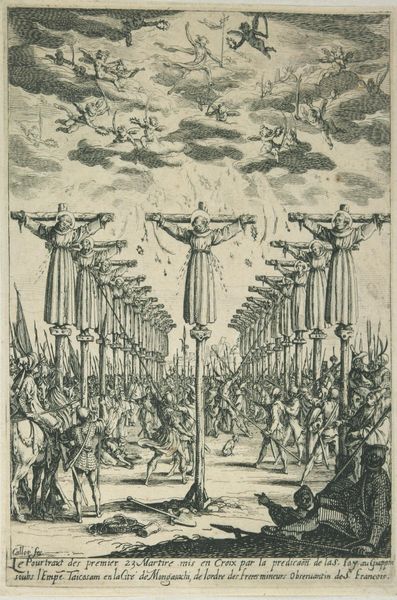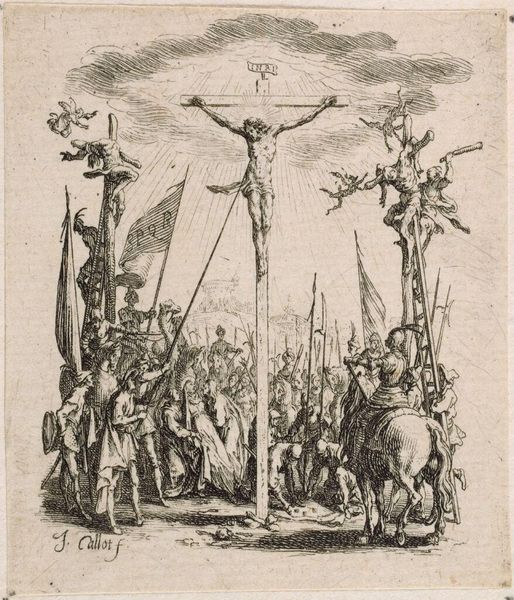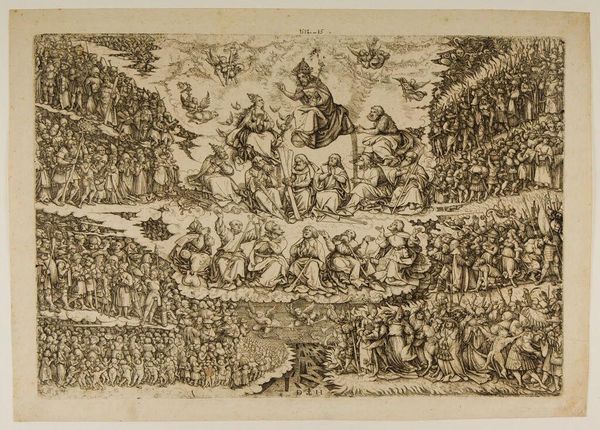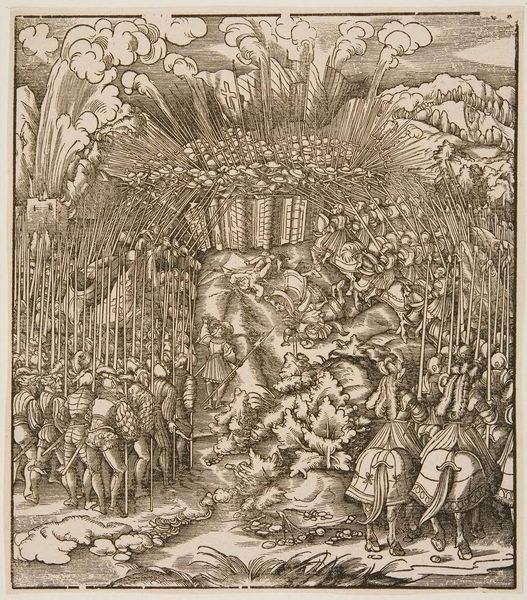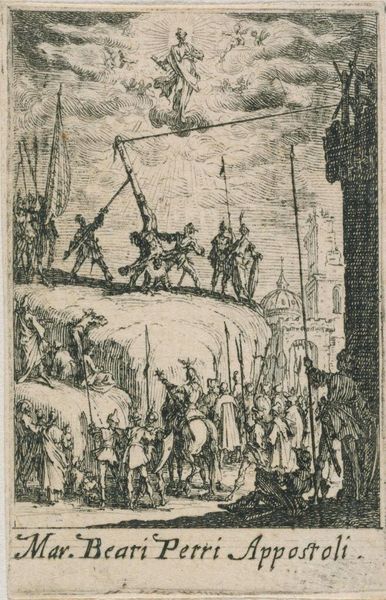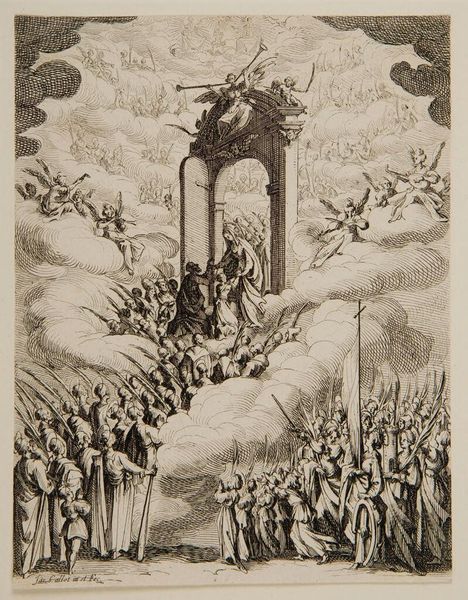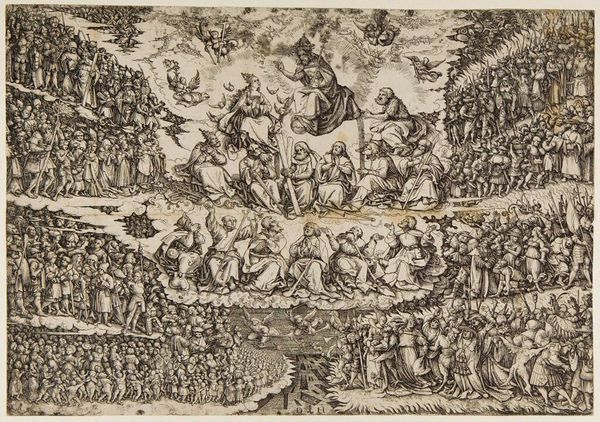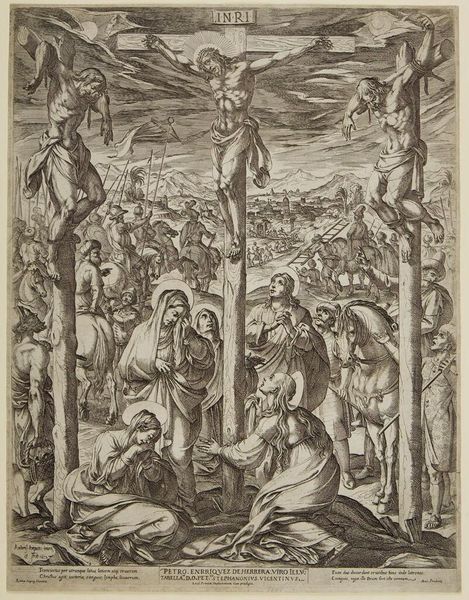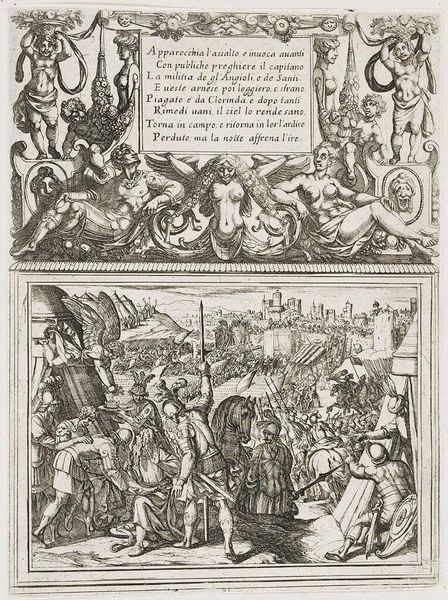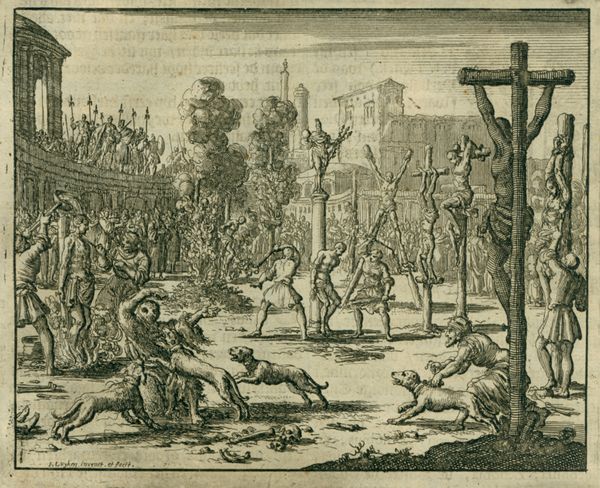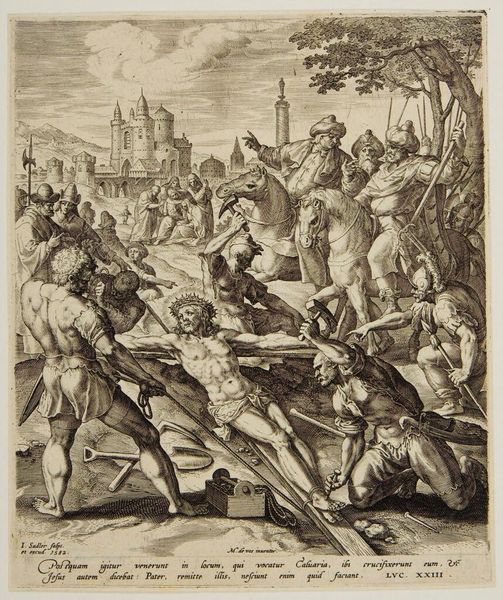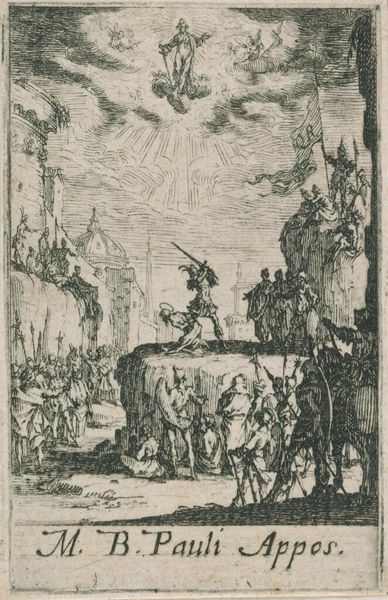
Dimensions: sheet: 16.6 x 11 cm (6 9/16 x 4 5/16 in.)
Copyright: CC0 1.0
Curator: This is Jacques Callot’s "Crucifixion of 23 Martyrs in Japan," an etching dating from sometime in the early 17th century. Editor: It’s a grim scene, isn't it? The sheer repetition of forms—the crosses, the figures—creates an unsettling sense of scale and uniformity. Curator: Indeed. Callot’s skill in etching allows for an impressive level of detail, particularly in rendering the textures of clothing and the varied poses of the crowd. The composition is quite striking. Editor: Absolutely. The array of crosses evokes the mass persecution. Above, figures ascend—presumably angels—their presence a potent symbol of divine acceptance amid earthly brutality. It's a powerful juxtaposition. Curator: I agree. The artist uses the sky to add dynamism to the piece; the cloud shapes and descending figures create a compelling contrast with the rigid geometry below. Editor: The cultural memory embedded here is staggering, revealing the clash between religious conversion and imperial power. The etching becomes a lasting testament to faith under duress. Curator: Precisely, and by analyzing the formal elements, we can understand how Callot conveys such a powerful narrative in such a small space. Editor: Understanding Callot’s symbolic language helps us connect with the emotional weight of this historical event. Curator: It’s a chillingly beautiful reminder of art's ability to memorialize and communicate complex historical narratives. Editor: Agreed. Callot transforms historical suffering into enduring visual language.
Comments
No comments
Be the first to comment and join the conversation on the ultimate creative platform.
